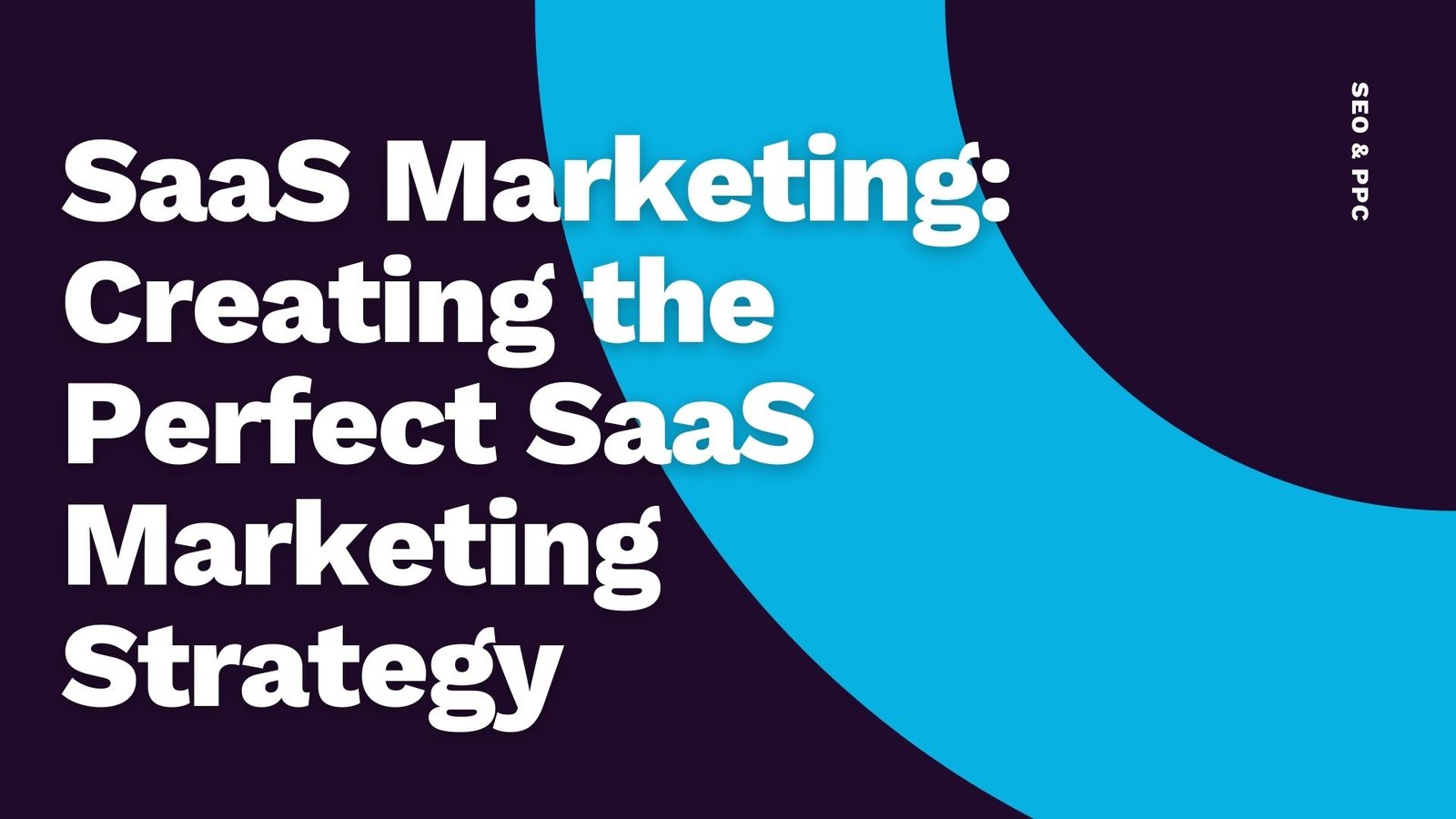Welcome to the ultimate guide on unlocking the power of SaaS marketing! If you’re ready to take your software as a service (SaaS) business to new heights, you’ve come to the right place. In this comprehensive blog post, we’ll delve into the world of SaaS marketing, explore key strategies for success, and provide you with all the tools you need to thrive in this competitive landscape. Whether you’re a seasoned SaaS marketer or just starting out, get ready to supercharge your marketing efforts and drive growth like never before!
Table of Contents
What is SaaS Marketing?
SaaS marketing, short for Software as a Service marketing, is a specialized form of digital marketing tailored to promote and sell subscription-based software solutions. Unlike traditional product-based marketing, SaaS marketing focuses on highlighting the unique benefits of cloud-based software that users can access remotely.
At its core, SaaS marketing aims to attract potential customers by showcasing the value proposition of the software, emphasizing features that solve specific pain points or streamline processes. This type of marketing often involves targeted messaging through various channels like social media, content creation, email campaigns, and more.
Successful SaaS marketers understand the importance of creating engaging content that educates prospects about the software’s capabilities while building trust in the brand. By leveraging data-driven strategies and analytics, SaaS marketers can optimize campaigns for maximum reach and conversions.
How Is SaaS Marketing Different From Other Types of Marketing
SaaS marketing stands out from traditional marketing approaches in several key ways. Unlike selling physical products, SaaS involves promoting intangible services that rely on subscription models. This means focusing on showcasing the value of ongoing access to software rather than a one-time purchase.
Moreover, SaaS marketing often revolves around educating potential customers about complex solutions and demonstrating how they can solve specific pain points. It requires a deep understanding of the target audience’s needs and challenges to effectively communicate the benefits of the software.
Another distinguishing factor is the emphasis on customer retention over acquisition. Since SaaS operates on recurring revenue streams, maintaining long-term relationships with clients is crucial for success. This shifts the focus towards providing excellent customer support and continuously improving the product based on user feedback.
In essence, SaaS marketing is about cultivating lasting partnerships with customers by delivering continuous value and adapting to evolving market demands.
SaaS Marketing Terminology Explained
SaaS marketing comes with its own set of unique terminologies that can sometimes be confusing for newcomers in the industry. Let’s break down some key terms to help you navigate this specialized field more effectively.
First up, let’s talk about Customer Acquisition Cost (CAC). This metric calculates how much it costs your business to acquire a new customer. Understanding your CAC is crucial in determining the profitability of your marketing efforts.
Next, we have Customer Lifetime Value (CLV). CLV represents the total revenue a business expects to earn from a customer throughout their entire relationship with the company. It helps in assessing the long-term value of each customer.
Monthly Recurring Revenue (MRR) is another important term in SaaS marketing. MRR reflects the predictable and recurring revenue generated from subscriptions on a monthly basis, providing insight into your revenue stream stability.
By familiarizing yourself with these essential SaaS marketing terminologies, you’ll be better equipped to develop and execute successful marketing strategies for your SaaS business.
SaaS Marketing Strategies
When it comes to SaaS marketing strategies, one size does not fit all. Each SaaS business is unique, requiring tailored approaches to reach its target audience effectively. Content marketing plays a crucial role in showcasing the value of your software solution. By creating informative blogs, eBooks, and case studies, you can establish thought leadership and build trust with potential customers.
Utilizing social media platforms like LinkedIn, Twitter, and Facebook can help increase brand visibility and engage with your audience on a more personal level. Email marketing remains a powerful tool for nurturing leads through personalized communication. Implementing SEO best practices ensures that your website ranks high in search engine results, driving organic traffic.
Collaborating with industry influencers can amplify your reach and credibility within the SaaS community. Offering free trials or demos allows prospects to experience the benefits of your software firsthand before making a purchasing decision. Stay agile in adjusting your strategies based on data analytics to continuously improve performance and ROI in SaaS marketing efforts.
Top Channels For SaaS Marketing
When it comes to SaaS marketing, choosing the right channels is crucial for success. One of the top channels for reaching potential customers is content marketing. By creating valuable and informative content such as blogs, whitepapers, and videos, you can engage your audience and establish your expertise in the industry.
Another effective channel for SaaS marketing is social media. Platforms like LinkedIn, Twitter, and Facebook allow you to connect with your target market on a more personal level. You can share updates about your product, interact with followers, and even run targeted ads to reach a larger audience.
Email marketing is also a powerful tool for SaaS companies. By building an email list of interested prospects or current users, you can nurture leads through personalized emails that highlight the benefits of your software solution.
Additionally, partnering with influencers or industry experts can help amplify your brand’s reach and credibility. Collaborating with thought leaders who align with your values can introduce your SaaS product to a wider audience and drive conversions.
Leveraging multiple channels in a cohesive strategy is key to maximizing the impact of your SaaS marketing efforts.
How to Get Leads for Your SaaS Business
Generating leads is crucial for the growth of your SaaS business. To attract potential customers, focus on creating valuable content that addresses their pain points and offers solutions. Utilize targeted marketing campaigns to reach your ideal audience through channels such as social media, email marketing, and search engine optimization.
Offer free trials or demos of your SaaS product to entice prospects to experience its benefits firsthand. Create compelling landing pages that highlight the unique selling points of your software and include clear calls-to-action prompting visitors to sign up or request more information.
Collaborate with industry influencers or partner with complementary businesses to expand your reach and tap into new customer bases. Leverage data analytics to track the effectiveness of your lead generation strategies and make adjustments accordingly for optimal results.
How to Market SaaS Products
When it comes to marketing SaaS products, understanding your target audience is key. Conduct thorough market research to identify their pain points and needs. Tailor your messaging to address how your product can solve their specific challenges.
Utilize content marketing strategies such as blogging, creating informative videos, and hosting webinars to showcase the value of your SaaS solution. Establishing thought leadership in your industry will help build credibility and attract potential customers.
Harness the power of social media platforms like LinkedIn, Twitter, and Facebook to engage with your audience on a more personal level. Share valuable insights, customer testimonials, and updates about new features or enhancements.
Collaborate with influencers or industry experts who can endorse your SaaS product to their followers. Partnering with individuals who have a strong online presence can significantly boost brand awareness and drive conversions.
How to Sell Your SaaS Service
Selling your SaaS service requires a strategic approach to showcase its value. Start by clearly defining your target audience and understanding their pain points. Tailor your messaging to address how your SaaS solution can solve their specific challenges.
Utilize case studies, testimonials, and demos to provide social proof and demonstrate the effectiveness of your product. Showcasing real-life examples can build trust with potential customers and help them visualize the benefits of using your service.
Implement a strong call-to-action in all marketing materials to prompt users to take the next step towards purchasing or signing up for a free trial. Make it easy for prospects to navigate through the buying process on your website, ensuring a seamless user experience from start to finish.
Offer flexible pricing options that cater to different customer needs and budgets. Providing transparent pricing information upfront can help build credibility and eliminate any potential barriers to making a purchase decision.
How to Measure SaaS Marketing
When it comes to measuring SaaS marketing efforts, tracking key performance indicators (KPIs) is essential for understanding the success of your strategies. Start by analyzing metrics such as customer acquisition cost (CAC), which helps you determine how much it costs to acquire a new customer.
Another crucial metric is customer lifetime value (CLV or LTV), which measures the total revenue a customer brings throughout their relationship with your business. Monitoring monthly recurring revenue (MRR) provides insights into the predictable income generated from subscriptions on a monthly basis.
Additionally, tracking conversion rates, churn rate, and engagement metrics like user retention and product usage can offer valuable insights into the effectiveness of your marketing campaigns. By regularly monitoring these KPIs and adjusting strategies accordingly, you can optimize your SaaS marketing efforts for continued growth and success.
Creating an Effective SaaS Marketing Plan
Creating an effective SaaS marketing plan is crucial for the success of your business. Start by defining your target audience and understanding their pain points and needs. Conduct thorough market research to identify competitors and industry trends.
Set clear, measurable goals that align with your business objectives. Determine which marketing channels will best reach your target audience – whether it’s through content marketing, social media, email campaigns, or paid advertising.
Develop a unique value proposition that sets your SaaS product apart from the competition. Create a content calendar outlining when and what type of content you will publish to engage with potential customers.
Establish key performance indicators (KPIs) to track the effectiveness of your marketing efforts. Regularly analyze data and adjust your strategy as needed to optimize results.
Remember, a well-crafted SaaS marketing plan is dynamic and adaptable – be prepared to iterate based on feedback and insights gathered along the way.
The Role Of Free Trials in SaaS Marketing
Offering free trials is a powerful strategy in SaaS marketing. It allows potential customers to experience the value of your product firsthand before committing financially. Free trials create a low barrier to entry, enticing users to explore the features and benefits of your software.
During the trial period, users can test the functionality and usability of the platform, helping them make an informed decision about its relevance to their needs. This hands-on experience often leads to higher conversion rates as users are more likely to become paying customers after seeing the value it brings to their operations.
Moreover, free trials provide an opportunity for you as a SaaS provider to showcase your expertise and customer support services. By offering guidance and assistance during the trial phase, you can build trust with potential clients and demonstrate your commitment to their success.
Incorporating free trials into your SaaS marketing strategy can be instrumental in driving user engagement, increasing conversions, and building long-term customer relationships.
Customer Acquisition Cost (CAC) and Customer Lifetime Value (CLV, CLTV or LTV)
Understanding Customer Acquisition Cost (CAC) and Customer Lifetime Value (CLV, CLTV or LTV) is crucial for the success of your SaaS marketing efforts. CAC refers to the cost associated with acquiring a new customer, including expenses on sales and marketing activities. On the other hand, CLV represents the total revenue that a customer is expected to generate throughout their relationship with your business.
Calculating CAC helps you determine how much you should invest in acquiring new customers while staying profitable. By comparing CAC to CLV, you can assess the overall health of your business model and make informed decisions regarding budget allocation for marketing campaigns.
Aim to keep your CAC lower than your CLV to ensure sustainable growth and profitability. Continuously analyze these metrics to optimize your marketing strategies and maximize ROI. Remember, focusing on retaining existing customers can also contribute significantly to increasing CLV over time.
By closely monitoring CAC and CLV metrics, you can refine your SaaS marketing approach, attract high-value customers, and drive long-term success for your business.
Monthly Recurring Revenue (MRR)
Monthly Recurring Revenue (MRR) is a key metric in SaaS marketing that reflects the predictable revenue stream generated by your subscription-based business model. By understanding and optimizing your MRR, you can drive sustainable growth and profitability for your SaaS company.
Incorporating strategies like customer acquisition cost (CAC) and customer lifetime value (CLV) into your marketing plan can help you make informed decisions to maximize MRR. Remember, successful SaaS marketing is an ongoing process of experimentation, analysis, and adaptation.
As the SaaS industry continues to evolve rapidly, staying agile and data-driven will be essential for unlocking the full potential of your marketing efforts. By implementing these strategies and keeping a close eye on metrics like MRR, you can position your SaaS business for long-term success in today’s competitive market landscape.





